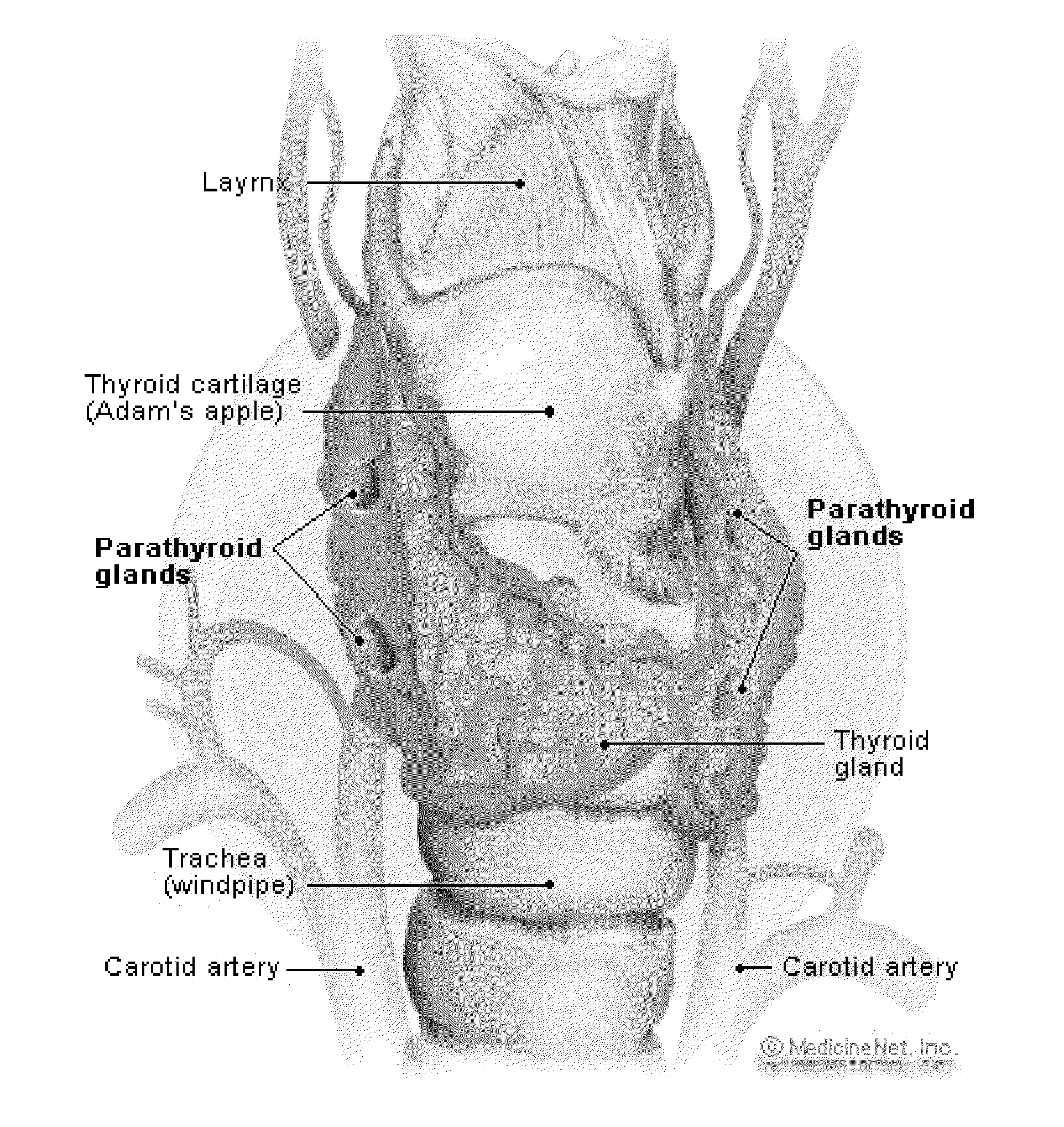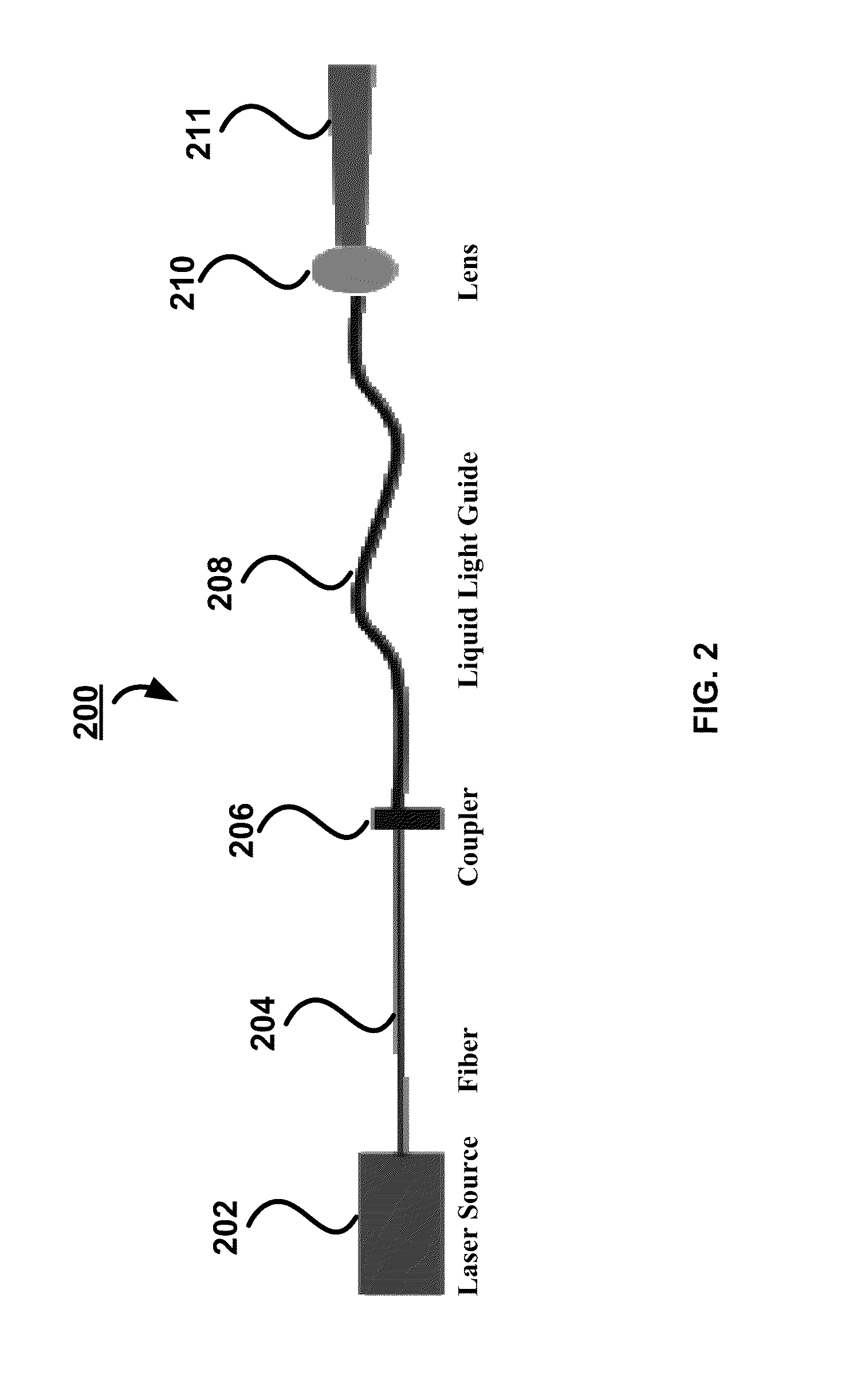Intra-operative use of fluorescence spectroscopy and applications of same
a fluorescence spectroscopy and intraoperative technology, applied in the field of near-infrared optical detection, can solve the problems of subjective and often inconclusive, difficult visual distinction of structures, and further complicated situations, and achieve the effect of higher levels of auto-fluorescen
- Summary
- Abstract
- Description
- Claims
- Application Information
AI Technical Summary
Benefits of technology
Problems solved by technology
Method used
Image
Examples
example 1
[0074]This example in part illustrates a method or process, with corresponding apparatus or system, according to one embodiment of the present invention.
[0075]Referring now to FIG. 3E, a system 300E is schematically shown in a block diagram. The system 300E has a light source 302, which is designed to provide a beam of light with appropriate excitation wavelengths and energy so as to excite certain molecules of sample tissue 307, when receiving the beam of light, to generate auto-fluorescence emission. The system 300E also has a light delivery device 326, which is optically coupled with the light source 302 and delivers the beam of light from the light source 302 to the tissue 307. An optional filter 330 can be strategically positioned in an optical path 328 along which optical signals emitted from the tissue 307 responsive to the incident beam of light travel and utilized to reduce excess wavelengths and / or ambient light to ensure desirable optical signals to be detected. The syste...
example 2
[0089]This example in part illustrates a method or process, with corresponding apparatus or system, according to another embodiment of the present invention.
[0090]Referring now to FIG. 3C, a system 300C is schematically shown in a block diagram. The system 300C has a light source 302, which is designed to provide a beam of light with appropriate excitation wavelengths and energy so as to excite certain molecules of sample tissue 307, when receiving the beam of light, to generate auto-fluorescence emission. The system 300C also has a light delivery device 326, which is optically coupled with the light source 302 and delivers the beam of light from the light source 302 to the tissue 307. An optional filter 330 can be strategically positioned in an optical path 328 along which optical signals emitted from the tissue 307 responsive to the incident beam of light travel and utilized to reduce excess wavelengths and / or ambient light to ensure desirable optical signals to be detected. The s...
example 3
[0095]This example in part illustrates an apparatus or system, which can be utilized to practice a method or process according to one embodiment of the present invention.
[0096]Referring now to FIG. 3A, a system 300A is schematically shown in block diagram. The system 300A has a light source 302, which is designed to provide a beam of light with appropriate excitation wavelengths and energy so as to excite certain molecules of sample tissue 307, when receiving the beam of light, to generate fluorescence emission. The system 300A also has a light delivery and collection device 306, which is optically coupled with the light source 302 and delivers the beam of light from the light source 302 to the tissue 307 and collects optical signals emitted from the tissue 307 responsive to the incident beam of light. An optional filter 310 can be utilized to reduce excess wavelengths and / or ambient light to ensure desirable optical signals to be detected. The system 300A further has a detector 314...
PUM
 Login to View More
Login to View More Abstract
Description
Claims
Application Information
 Login to View More
Login to View More - R&D
- Intellectual Property
- Life Sciences
- Materials
- Tech Scout
- Unparalleled Data Quality
- Higher Quality Content
- 60% Fewer Hallucinations
Browse by: Latest US Patents, China's latest patents, Technical Efficacy Thesaurus, Application Domain, Technology Topic, Popular Technical Reports.
© 2025 PatSnap. All rights reserved.Legal|Privacy policy|Modern Slavery Act Transparency Statement|Sitemap|About US| Contact US: help@patsnap.com



